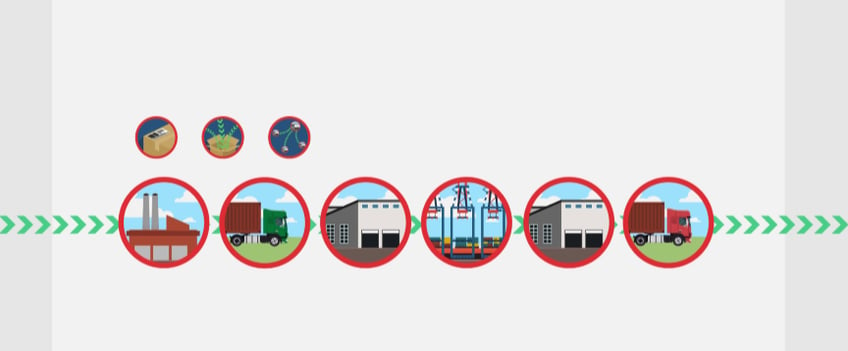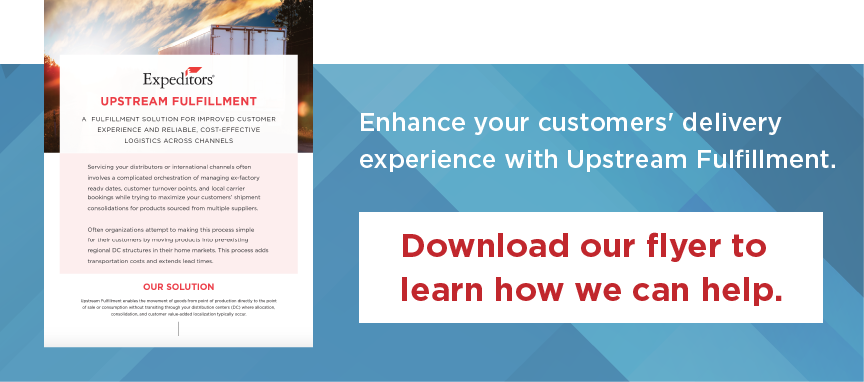Well, enough talk, let’s dive in!
- We incur high transportation costs from moving products from the point of production to local DCs to turn over the products to customers, often for re-export. How can we avoid these costs?
Expeditors Upstream Fulfillment allows you to ship directly to your distributors, avoiding any extra transport and product handling in your DCs. As a result, you’ll have reduced costs for your employees to unload, stock, pick, and ship products to the store and avoid the time and cost associated with the labor to process each order and shipment. - I have vendors throughout the region in different countries, all shipping less-than-container load (LCL) quantities. How can I implement a multi-country consolidation program?
Organizations with wide-ranging sourcing areas and limited critical mass in those locations often end up with high transport costs due to the vast number of LCL shipments and underutilized containers.
Upstream Fulfillment provides an opportunity in many regions to import and consolidate regionally sourced products with locally manufactured products. Upstream Fulfillment locations can serve to combine merchandise from multiple vendors to reduce the number of shipments and improve container utilization. They also can support consolidation programs covering both locally sourced material as well as products coming from other regional locations, making multi-country consolidation an option. - Our customers require special repackaging, kitting, ticketing, and labeling; is this an option using Expeditors Upstream Fulfillment?
Commonly, customers require products that are packed for immediate sale, and the need to repackage, label, or assemble products to customer-specifications requires special preparation. The ability to prepare orders to the specific needs of each customer is imperative but also time-consuming and costly.
Upstream Fulfillment operates in more than 50 countries with 300+ facilities that are equipped with the resources and space to provide a range of service options and operational knowledge that meet the demand of each customer. Our specialized services can be deployed in any region you may require without fixed investments on your part. - We incur sub-optimal costs for multiple LCL shipments. How can we avoid these costs?
Requiring your customers to pick up the contents of their orders across multiple supply points, often in the same regions, unnecessarily adds to their ultimate landed costs. Multiple less-than-container load shipments moving in the same trade lanes over the same time periods is a missed opportunity for consolidation and reducing costs. Converting LCL shipments to FCL loads for your customers is an immediate opportunity to improve their buying experience through lower costs and fewer shipments to manage.
Improving your customers’ buying experience while lowering their total purchase costs are objectives for all supply chain leaders. Upstream fulfillment is an important tool in meeting these challenges.
This is part 1 of 3 in this FAQ series, so be sure to stay tuned for next week where we’ll be going over a new topic, keeping up with your customers’ buying needs with Upstream Fulfillment.
Have any questions we didn’t answer? Reach out to our retail experts today to learn more about how your company can benefit from this program.





